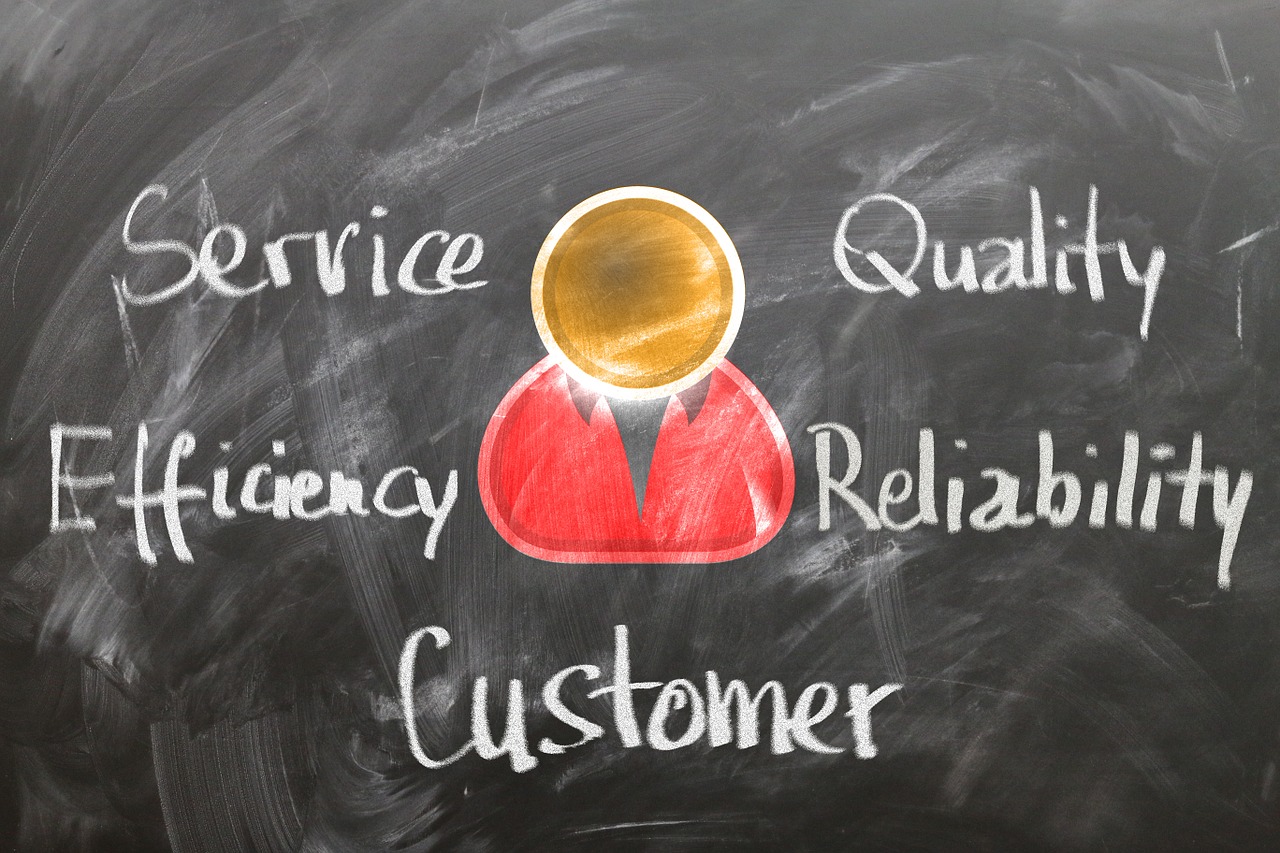The key to sustainable growth for small businesses lies not just in acquiring new customers, but in retaining the existing ones. A study by Harvard Business School has revealed that increasing customer retention rates by just 5% can lead to a remarkable boost in profits ranging from 25% to 95%. This statistic highlights the paramount importance of customer retention strategies for small businesses. In this article, we’ll explore 15 proven strategies to help small businesses retain their valued customers and build lasting relationships.
1. Making Customer Experience (CX) a Strategic Priority: Customer experience has evolved from being a mere transactional element to a strategic differentiator. Small businesses need to focus on delivering exceptional CX at every touchpoint, ensuring that customers feel valued and understood. Studies have shown that 86% of buyers are willing to pay more for a better customer experience, underscoring the financial significance of prioritizing CX.
For small businesses, this means crafting a CX strategy that aligns with their brand identity and values. It involves understanding the customer journey, identifying pain points, and creating solutions that enhance satisfaction. By investing in training and empowering employees to deliver top-notch customer service, businesses can ensure that CX becomes a driving force behind customer retention.
Moreover, gathering feedback through surveys, reviews, and direct interactions can provide valuable insights into areas of improvement. Adapting and evolving the CX strategy based on this feedback demonstrates a commitment to customer satisfaction and long-term relationships.
2. Responding to Customer Issues Instantly: In the digital age, customer patience is dwindling, and instant gratification is the norm. A Zendesk study found that 42% of customers expect a response within an hour, while 52% stop doing business with a company after a poor customer service experience. Small businesses must recognize the critical role of rapid issue resolution in customer retention.
To achieve this, implementing a dedicated customer service team that is available across multiple communication channels can make a significant difference. Whether it’s through live chat, email, or social media, prompt responses convey attentiveness and care. Automation tools can also streamline the process, acknowledging customer inquiries even outside regular business hours. By valuing customer time and promptly addressing concerns, small businesses can foster loyalty and trust.
3. Delivering Real-Time Customer Engagement: In today’s fast-paced world, real-time engagement has become an expectation rather than a luxury. Small businesses can leverage technology to establish real-time connections with their customers, creating a sense of immediacy and responsiveness.
Channels like live chat, messaging apps, and social media platforms enable businesses to provide instant assistance, answer queries, and offer personalized recommendations. This not only enhances the customer experience but also positions the business as reliable and customer-centric. Integrating these real-time engagement tools into the business website and apps ensures that customers can easily reach out whenever they need support.
By investing in real-time engagement, small businesses can effectively strengthen customer relationships, address concerns promptly, and demonstrate their commitment to providing exceptional service.
4. Creating a Well-Tailored Customer Retention Program: One-size-fits-all approaches rarely resonate with customers. Instead, small businesses should focus on crafting personalized retention programs that cater to the unique preferences and behaviors of their customer base. Utilizing customer data and segmentation can help identify distinct customer groups, enabling businesses to offer tailored incentives, rewards, and offers.
Segmentation can be based on factors such as purchase history, demographics, and engagement level. By understanding what each segment values, businesses can design retention strategies that feel relevant and valuable. For instance, offering exclusive discounts on products that align with a specific customer’s interests can lead to increased engagement and loyalty.
Additionally, effective retention programs should evolve over time. Regularly review and analyze the impact of different strategies on customer retention rates. If certain initiatives are proving more successful than others, allocate resources accordingly. This adaptive approach ensures that your retention program remains effective in a dynamic market landscape.
5. Implementing Customer Feedback Judiciously: Customer feedback is a treasure trove of insights waiting to be unearthed. Small businesses that actively listen to their customers’ opinions, suggestions, and grievances can gain valuable perspectives that inform decision-making. Whether it’s through surveys, reviews, or direct interactions, every piece of feedback can contribute to shaping a more customer-centric business model.
However, it’s not enough to simply gather feedback; it must be implemented judiciously. Businesses should categorize feedback based on its relevance and potential impact. Some feedback might require immediate action, while others could serve as valuable input for long-term strategy development. By addressing customer concerns and making visible improvements based on their suggestions, businesses showcase their dedication to continuous improvement and customer satisfaction.
Remember that implementing customer feedback isn’t a one-time task. Regularly communicate the changes you’ve made based on customer input. This transparency not only demonstrates responsiveness but also reinforces the idea that your business genuinely values its customers’ opinions.
6. Deliver Consistent Omnichannel Customer Service: Customers today interact with businesses through various channels – social media, websites, emails, and more. Providing a consistent experience across these channels is vital for retaining customers. A report by Aberdeen Group indicates that companies with strong omnichannel engagement strategies retain 89% of their customers, while those with weak strategies retain only 33%.
To achieve this, small businesses should integrate their customer service systems across channels. When a customer initiates contact through one channel and continues on another, the transition should be seamless. This prevents customers from repeating information and showcases a deep understanding of their journey. Furthermore, ensure that your branding, tone, and service quality are consistent regardless of the channel. This cohesive approach enhances the overall customer experience and fosters loyalty.
7. Map Your Customer Journey: Understanding your customers’ journey from initial contact to post-purchase engagement is pivotal for retention. Mapping the customer journey helps identify pain points and opportunities for improvement. McKinsey & Company’s research shows that companies that map their customer journeys are 60% more likely to have higher customer satisfaction rates.
Begin by identifying touchpoints and interactions customers have with your business. This can range from visiting your website to receiving post-purchase follow-ups. At each touchpoint, evaluate customer expectations, emotions, and potential pain points. Use this insight to streamline the journey, making it smoother and more enjoyable. A well-mapped customer journey enables you to proactively address issues and deliver a cohesive experience that resonates with your customers.
8. Delight Your Customers Always: Customer delight goes beyond meeting expectations; it’s about exceeding them in memorable ways. This emotional connection can have a profound impact on customer retention. Research by Temkin Group suggests that customers who have an emotional connection with a brand are three times more likely to recommend and repurchase from it.
To delight your customers, go the extra mile in surprising and meaningful ways. This could involve personalized thank-you notes, unexpected discounts, or even remembering special occasions. Remember, the goal is to create positive emotional experiences that leave a lasting impression. Consistently delivering these moments of delight sets your business apart and builds a strong foundation for customer loyalty.
9. Listen & Empathize with Your Customers: Empathy is a cornerstone of effective customer retention. Customers want to feel heard, understood, and valued. Train your customer service team to actively listen and show genuine empathy when interacting with customers. According to a PwC study, 73% of consumers consider experience a priority in their purchasing decisions, including empathetic interactions.
Empathy requires understanding your customers’ pain points, frustrations, and aspirations. When customers feel that their concerns are taken seriously, they’re more likely to remain loyal. Foster a culture of empathy within your business, ensuring that every customer interaction is an opportunity to demonstrate care and build trust.
10. Maintain Customer Communication with Newsletters: Newsletters are a powerful tool for maintaining a consistent connection with your customers. Regular communication keeps your brand on their radar and offers valuable content. Craft newsletters that provide insights, updates, and offers relevant to your customers’ interests.
To make newsletters effective, ensure they are visually appealing and mobile-friendly. Segment your email list to deliver content tailored to specific customer groups. Avoid overwhelming your subscribers; maintain a steady frequency that provides value without feeling intrusive. By nurturing this ongoing communication, you can keep your customers engaged and informed, ultimately contributing to better retention rates.
11. Build Community to Enhance Customer Relationships: Creating a sense of community around your brand can significantly impact customer retention. Small businesses can foster a space where customers can connect, share experiences, and interact with each other. This community-building approach strengthens the emotional bond customers have with your brand.
Utilize social media platforms, online forums, and even events to bring your customers together. Encourage discussions, showcase user-generated content, and provide opportunities for customers to share their stories. By facilitating these interactions, you not only deepen customer relationships but also establish a loyal customer base that feels invested in your brand’s success.
12. Keep a Track of Customer Retention Metrics: Effective retention strategies require ongoing monitoring and analysis. Keep a close eye on key customer retention metrics such as churn rate, customer lifetime value, and repeat purchase rates. These metrics provide insights into the health of your customer base and the impact of your strategies.
Regularly review these metrics to identify trends and areas for improvement. If you notice a decline in retention, investigate the potential causes and adjust your strategies accordingly. Continual measurement and adaptation ensure that your customer retention efforts remain aligned with your business goals and customer expectations.
13. Assist Proactively to Improve Customer Retention: Anticipating customer needs and proactively addressing potential issues is a proactive retention strategy. Implement AI-driven tools that analyse customer behavior to predict future actions, such as identifying customers who might be at risk of churning.
Contact these customers before problems escalate, offering solutions and personalized assistance. This demonstrates your commitment to their satisfaction and creates a positive impression. Proactive assistance not only resolves issues but also showcases your dedication to going above and beyond for your customers.
14. Leverage Employee Engagement: Your employees play a pivotal role in shaping customer experiences. Engaged employees are more likely to deliver exceptional service that resonates with customers. Encourage employee engagement through training, recognition, and involvement in decision-making processes.
Empower your employees to take ownership of customer interactions, ensuring they have the tools and autonomy to provide personalized assistance. When employees are enthusiastic about their roles, it translates into genuine interactions that positively impact customer retention.
Retaining customers is a multifaceted endeavour that requires a combination of strategic planning, customer-centric initiatives, and continuous improvement. By implementing the 15 strategies outlined in this article, small businesses can establish strong foundations for building lasting customer relationships. From prioritizing customer experience and embracing technology to fostering empathy and engagement, each strategy contributes to a holistic approach to customer retention. As you navigate the competitive landscape, remember that nurturing existing customers is just as essential as acquiring new ones. Through dedication, innovation, and a commitment to excellence, your small business can flourish and thrive in the realm of customer retention.
FAQ
- Why is customer retention important for small businesses? Customer retention is vital for small businesses because it leads to increased profitability, brand loyalty, and sustainable growth. Studies show that even a small increase in customer retention can have a significant positive impact on a business’s bottom line.
- How can I create a personalized customer retention program? Tailoring your retention program involves segmenting your customer base and offering incentives, rewards, and experiences that cater to each segment’s preferences and behaviors. By utilizing customer data and insights, you can design strategies that resonate with individual customers.
- What role does employee engagement play in customer retention? Employee engagement is crucial as engaged employees are more likely to provide exceptional customer service. When employees are enthusiastic, empowered, and aligned with the company’s values, they contribute to positive customer experiences that enhance retention.
- What metrics should I track to measure customer retention success? Key metrics include customer churn rate, customer lifetime value, repeat purchase rate, Net Promoter Score (NPS), and customer satisfaction scores. These metrics offer a comprehensive view of your customer retention efforts and highlight areas for improvement.
- How do I foster a sense of community around my brand? Building a community involves utilizing social media, online forums, and events to create spaces where customers can connect, share experiences, and interact with each other. By fostering a sense of belonging, you strengthen customer relationships and loyalty.




